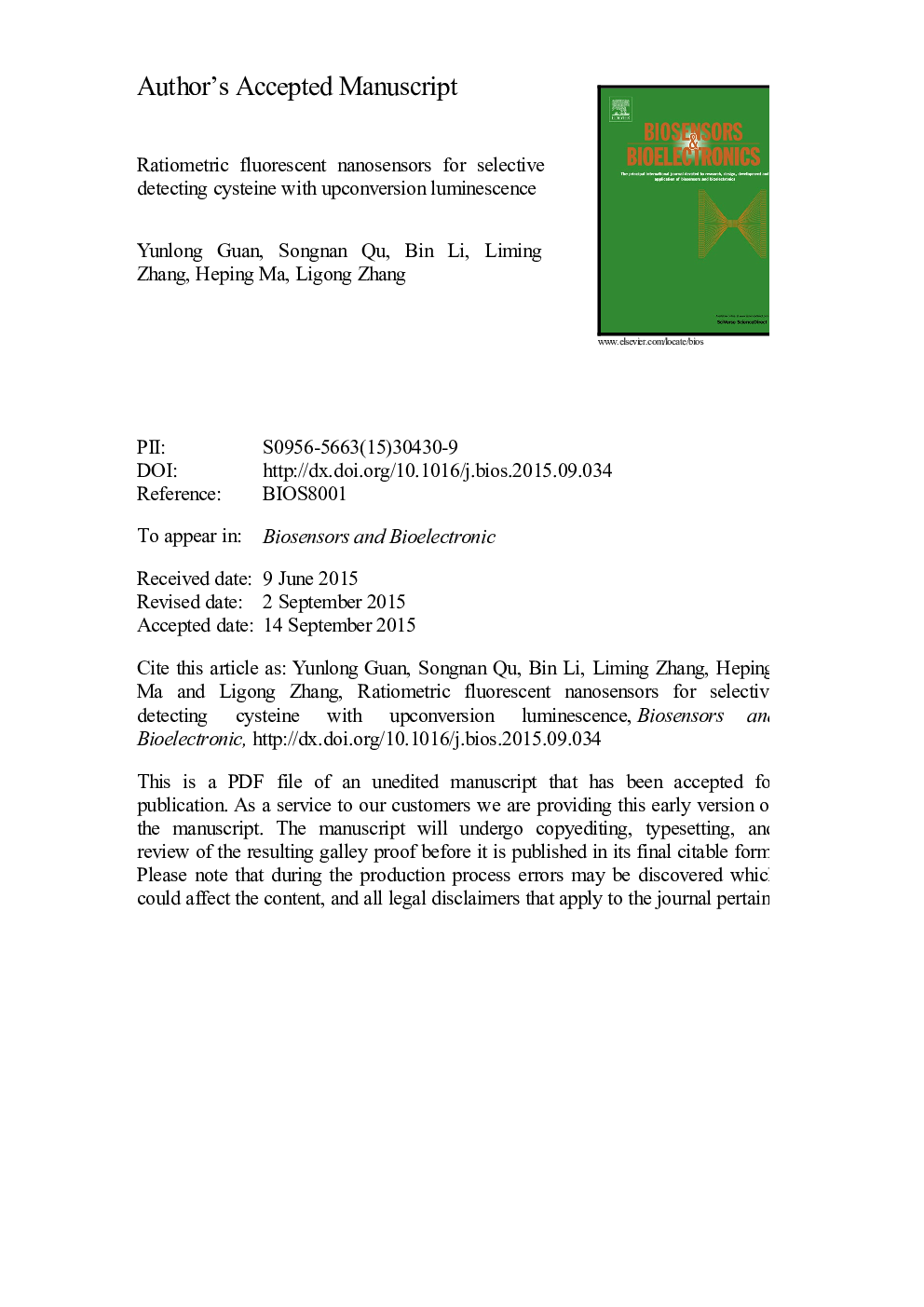| Article ID | Journal | Published Year | Pages | File Type |
|---|---|---|---|---|
| 7231288 | Biosensors and Bioelectronics | 2016 | 26 Pages |
Abstract
Fluorescent sensors based on upconversion (UC) luminescence have been considered as a promising strategy to detect bio-analyte due to their advantages in deep penetration, minimum autofluorescence, and ratiometric fluorescent output. A prototype of nanosensors combined with mesoporous silica coated upconversion nanoparticles (UCNPs) and a fluorescein-based fluorescent probe loaded in pores was therefore designed to detect cysteine (Cys). The silica shell provided loading space for the probe and enabled the nanosensors to disperse in water. In the presence of Cys, the fluorescent probe was transformed into 5(6)-carboxyfluorescein with an emission band centering at 518 nm which was secondarily excited by the light at around 475 nm from NaYF4:Yb3+, Tm3+ UCNPs driven by 980 nm near-infrared (NIR) laser. The intensity ratio between green and blue luminescence (I518/I475) grew exponentially with increasing concentrations of Cys over a range of 20-200 μmol Lâ1. The response of the nanosensors towards Cys was recognizable with naked eyes by luminescence color change. Evidences suggest that these nanosensors are capable of sensing Cys in aqueous solution and distinguishing Cys from homocysteine (Hcy) with kinetically-controlled selectivity. The system was further employed to detect Cys in human serum and the result was in agreement with it tested by high performance liquid chromatography with acceptable recovery.
Related Topics
Physical Sciences and Engineering
Chemistry
Analytical Chemistry
Authors
Yunlong Guan, Songnan Qu, Bin Li, Liming Zhang, Heping Ma, Ligong Zhang,
